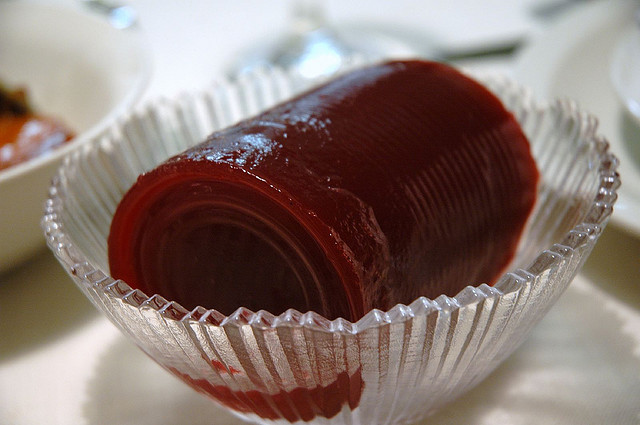
Who’s really controlling kids’ health? It’s time to do some finger slice-pointing. (Photo by Pink Stock.)
By now, most of us have seen the headlines. They’ve ranged from “Is Pizza Sauce a Vegetable? Congress says Yes” to the more childish, “Congress to USDA: Pizza is So a Vegetable, Nah Nah Nah Nah Nah Nah.”
News outlets have had a field day over a recent proposal from Congress that suggests pizza sauce should qualify as a vegetable within the National School Lunch program. And most have oversimplified the story.
The typical news story went like so: The nutrition advocates want healthier school meals, but Republicans don’t believe the decision should be up to the feds. Simple, right? Here’s one example:
Conservatives in Congress say the federal government shouldn’t be telling children what to eat. They say requirements proposed by the president went too far, costing budget strapped schools too much. Local schools are caught in the middle.
Meanwhile, some food policy writers — Mother Jones’ Tom Philpott and Ed Bruske aka The Slow Cook, for example — have done a better job of explaining the massive industry lobbying at play.
And while it is easy to compare this current craziness to the infamous Reagan-era “ketchup-is-a-vegetable” school lunch proposal (which did not pass), it might be helpful to insert a bit more history, analysis, and political context into the discussion.
History: As much as the GOP would like to hang this on Obama, the effort to improve the quality of school meals dates back decades. In the mid-1990s, a huge battle was finally won to bring school nutrition in line with the federal government’s own dietary advice. Since then, science evolved and the standards needed updating. Meanwhile, school vending machines are increasingly loaded with soft drinks and candy. Then, in 2004, (yes, under the Bush administration) Congress authorized the U.S. Department of Agriculture (USDA) to improve nutrition standards for school food. Finally, in 2009, at the request of the USDA, the Institute of Medicine (IOM) released a report with very specific school lunch recommendations — based on science. So this process dates back to long before Obama (despite the GOP’s habit of blaming him for every problem since the dawn of time).
Common sense: If you stop and think about it, shouldn’t all food assistance programs (i.e., those paid for with taxpayer dollars), at the very least, comply with the Dietary Guidelines for Americans? Remember the feds’ new MyPlate diagram, which recommends half the meal be comprised of fresh fruits and vegetables? Yes, those guidelines.
Politics: As some have reported, a great deal of the behind-the-scenes lobbying influencing this decision came from the American Frozen Food Institute (yes, there’s a trade group for frozen pizza, fries, and other school food abominations; and surprise! they are thrilled by this outcome.) But almost everyone missed the industry front group, The Coalition for Sustainable Meal Programs. (I could not make that one up.) Funded by corporations such as ConAgra, the group has picked apart the proposed rules under the guise of “providing healthy meals and fighting hunger.” They argue against serving fruit without added sugar and for retaining the current levels of sodium in school food because, as their website says, “Sodium is an essential mineral and is required for life.”
But the issue isn’t just that the processed food industry is upset with proposed improvements to school meals, it’s how lobbyists are flexing their political muscle to get their way. The critical (and most underreported) part of this story is how Congress has hijacked the USDA regulatory process to do the food industry’s bidding.
Congress is putting language to undercut the USDA rules into its agriculture appropriations bill — a sneaky move that’s often used when lobbyists want something to pass outside of the usual legislative (and in this case regulatory) process.
You know things are bad politically when even the USDA is backed into a corner. The agency seemed a tad shell-shocked recently when, in defending its proposed rules, it told the Washington Post that keeping pizza in schools won’t save any money, as the GOP claimed.
Let’s recap: Congress authorized USDA to improve the nutritional quality of school meals seven years ago (which was already long overdue). USDA commissioned a report from the IOM to help the agency do exactly that, based on the best available science. USDA subsequently proposed regulations, has taken public comment, and should then come out with final regulations. (It’s Civics 101, folks: Congress makes the laws and the executive branch carries them out). Agencies such as the USDA are the experts, not Congress. That is why the legislature delegates authority to the agency in charge. But the food industry didn’t get what it wanted through the normal channels, so it went to Congress, which usurped the entire process. I’d love to see reporters asking: How the hell did that happen?
And let’s not forget this is supposed to be about our nation’s kids. Which raises one more interesting question: Where exactly is Michelle Obama and her Let’s Move campaign now? The first lady has been a champion for healthier school meals, but it looks — once again — like she has no real power to impact policy. The food industry, on the other hand, has plenty. And while politicians curry favor with lobbyists, schoolchildren will pay the ultimate price, with their health.




